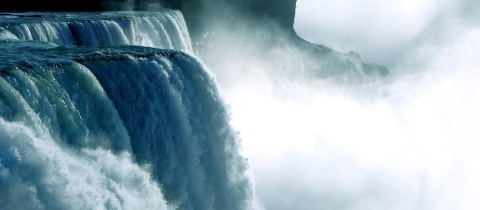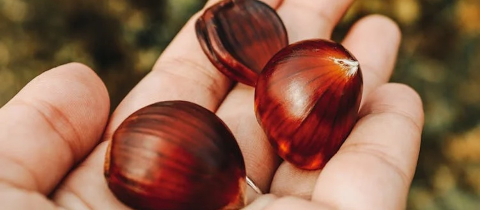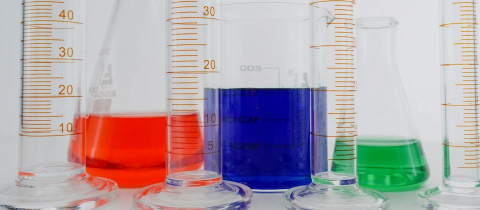Are flushable wipes flushable? You may be retorting, “Is the sky blue?”, but there is reason to be skeptical. On-going media coverage tells us that so-called flushable wipes should not be disposed of down the toilet. So I was surprised to see one of the biggest science channels on YouTube get a sponsorship deal with a company that claims that their wipes truly are flushable. I decided to look at the turbulent history of flushable wipes, often sold for the vague purpose of “personal cleaning.”
The core of a flushable wipe is made of pulp, which can be treated in a variety of ways to strengthen it, such as using specific polymers as binders or by creating webs of additional fibres for support. By comparison, toilet paper is made by cooking small pieces of wood with chemicals, yielding a wood pulp that is combined with water to create paper stock. Water is removed from this stock and the resulting mat is rolled through heated cylinders and, voilà, toilet paper is born.
There are environmental concerns with flushable wipes, chief among them that the plastic they often contain end up in waterways. You may not have known that many of these wipes contain plastic because manufacturers don’t typically disclose the materials they use for their wipes, which led a team of UK scientists to bring 6 flushable and 7 non-flushable wipes into the lab to figure out what they were made of. Polyester, a synthetic fibre that comes from petroleum, was detected in all non-flushable wipes, while some of their flushable counterparts contained plastics like high-density polyethylene. These human-made materials are thought to be added to wipes to make them more durable, but they can break down into microplastics that are known to pollute the environment and that might (the jury is still out) cause health issues in animals and humans.
You may be wondering at this point what distinguishes a flushable from a non-flushable wipe. The answer seems to be: not much, if anything at all. It turns out that, in a laboratory analysis of 58 wipes from around the world, flushable and non-flushable wipes were similar in terms of how thick they were, the volume they took up, how much individual sheets weighed, and how they reacted to moisture. In fact, the authors went so far as to conclude that their results supported “the absence of any technical basis that separates flushable wipes clearly from non-flushables.”
The reason may have a lot to do with the fact that “flushability” is not standardized and enforced. I reached out to Barry Orr, a spokesperson for the Municipal Enforcement Sewer Use Group (MESUG) in Canada, who told me that there was no Canadian standard for flushability but that MESUG and the Canadian Water and Wastewater Association are working to get one in place. Meanwhile, product manufacturers have developed guidance documents for flushability, but it is not obvious if these documents are being followed by their own industry. Case in point: a research group at Ryerson University in Toronto recently tested 101 products available in Southern Ontario, half of which were marked as flushable, by recreating a toilet and private drain connection in the lab, and the results were not pretty. One thing they tested for was dispersibility, which is how easily the product breaks down in smaller pieces, an important criterion to prevent toilets and drain lines from clogging up. Only 11 products fully disintegrated and they were all samples of toilet paper. The team found no evidence of disintegration for the baby and cleaning wipes they tested. And while bathroom tissue took on average fewer than two flushes to clear the line, cleaning cloths required four, with some baby wipes needing more than five. Their conclusion? “It is evident that none of the products other than bathroom tissue are ‘flushable’.”
Even newer claims should be met with skepticism, though there is hope
What about newer wipes claimed to have been developed in collaboration with a sewage treatment service in Jacksonville, Florida and to thus be truly flushable? I remain unconvinced. First of all, water and hardness temperatures vary between Florida and Canada, for example, so what’s good for the Floridian gander may not be good for the Canada goose. Also, I am left wondering why the very same sewage treatment service reminded people very recently to think twice before flushing anything but toilet paper and to avoid flushing down wipes even when made with “safe flush technology.”
And if you see a wipe that is claimed to be made without synthetic materials and thus more easy to degrade, be skeptical. As Orr reminded me, flushable wipes can contain regenerated cellulose. It’s when a manufacturer takes the cellulose from plants and treats it with chemicals to create a fibre that, while made up of a natural material, is artificially spun into a much stronger product than would be found naturally. So any wipe must be tested for dispersibility regardless of the basic materials out of which it is made.
Canadian cities are reported to be spending hundreds of millions of dollars a year to remove blockages where the main guilty party are wipes. These wipes can absorb sand, clay, food waste and other products in the sewers, turning free-running wastewater into sewer solids and so-called “fatbergs.”
Will wipes ever be flushable? It turns out that some are, but they have not made their way across the pond. The lead researcher behind the Ryerson University study, Dr. Darko Joksimovic, tells me that since the publication of their report, they have tested wipes that fall apart almost as quickly as toilet paper, including one from Japan.
“Currently, in North America,” Barry Orr tells me, “we haven’t seen wipes disperse rapidly enough to meet the International Water Services Flushability Group criteria, and therefore we would discourage anyone from flushing them down the toilet. Put them in the garbage.”
North American flushable wipes are not flushable. Yet.
Take-home message:
- Independent scientific testing so far indicates that the vast majority of so-called flushable wipes should not be flushed down the toilet but should be disposed of in the trash can to prevent costly clogging
- Laboratory analyses have failed to distinguish between wipes marketed as flushable and those sold as non-flushable
- Many so-called flushable wipes contain plastic fibres to reinforce them, but these synthetic fibres can degrade into polluting microplastics once the wipe is flushed







